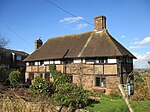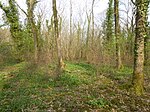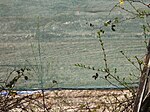Woodmancote, Horsham District

Woodmancote is a village and civil parish in the Horsham District of West Sussex, England. The village is 1 mile (1.5 km) southeast of Henfield on the A281 road. It should not be confused with the other West Sussex village of Woodmancote near Chichester. This scattered community has no village centre. The parish includes the hamlet of Blackstone. The Anglican parish church, St Peter's, which stands alone beside the A281 road, dates to the thirteenth century, and was largely rebuilt in 1868. Close to the church is Woodmancote Place, a large house used as a country club. There is also a parish hall. Woodmancote is recorded in the Domesday Book of 1086 as "Odemancote". Two of the Lewes martyrs, burnt at the stake in the Marian Persecutions of 1556, Thomas Harland and John Oswald, came from Woodmancote.The parish has a land area of 849 hectares (2096 acres). In the 2001 census 478 people lived in 189 households, of whom 248 were economically active. At the 2011 Census the population was 543.
Excerpt from the Wikipedia article Woodmancote, Horsham District (License: CC BY-SA 3.0, Authors, Images).Woodmancote, Horsham District
Bramlands Lane,
Geographical coordinates (GPS) Address Nearby Places Show on map
Geographical coordinates (GPS)
| Latitude | Longitude |
|---|---|
| N 50.91872 ° | E -0.24441 ° |
Address
Bramlands Lane
Bramlands Lane
BN5 9RX
England, United Kingdom
Open on Google Maps











